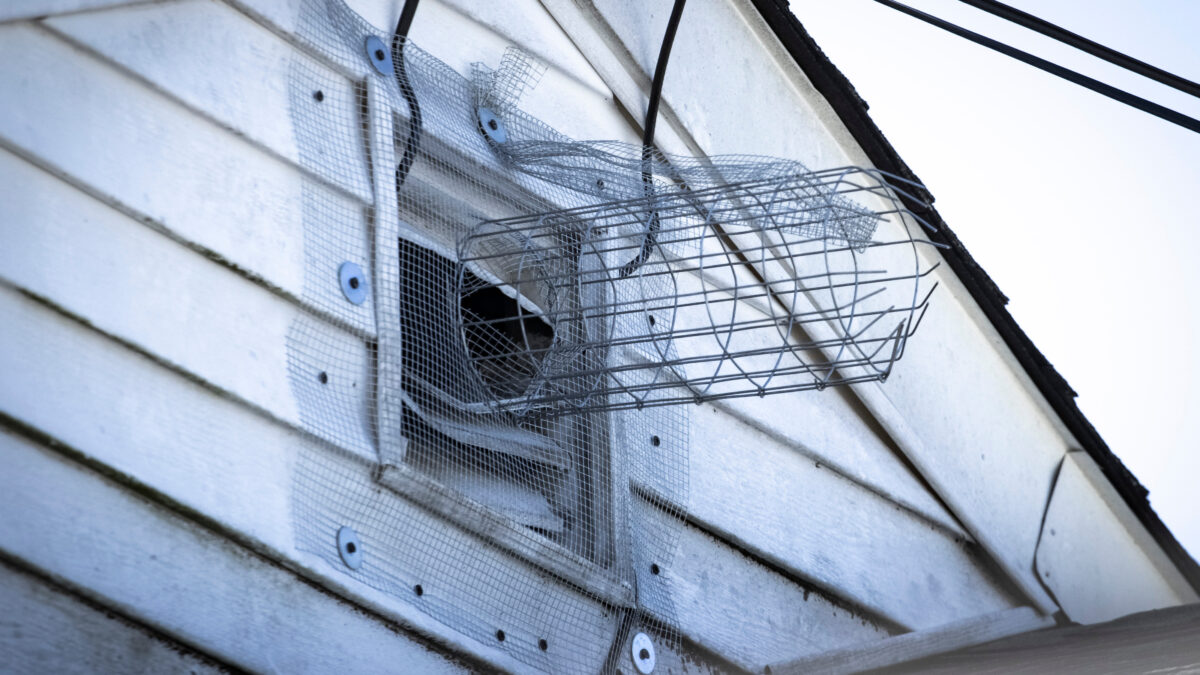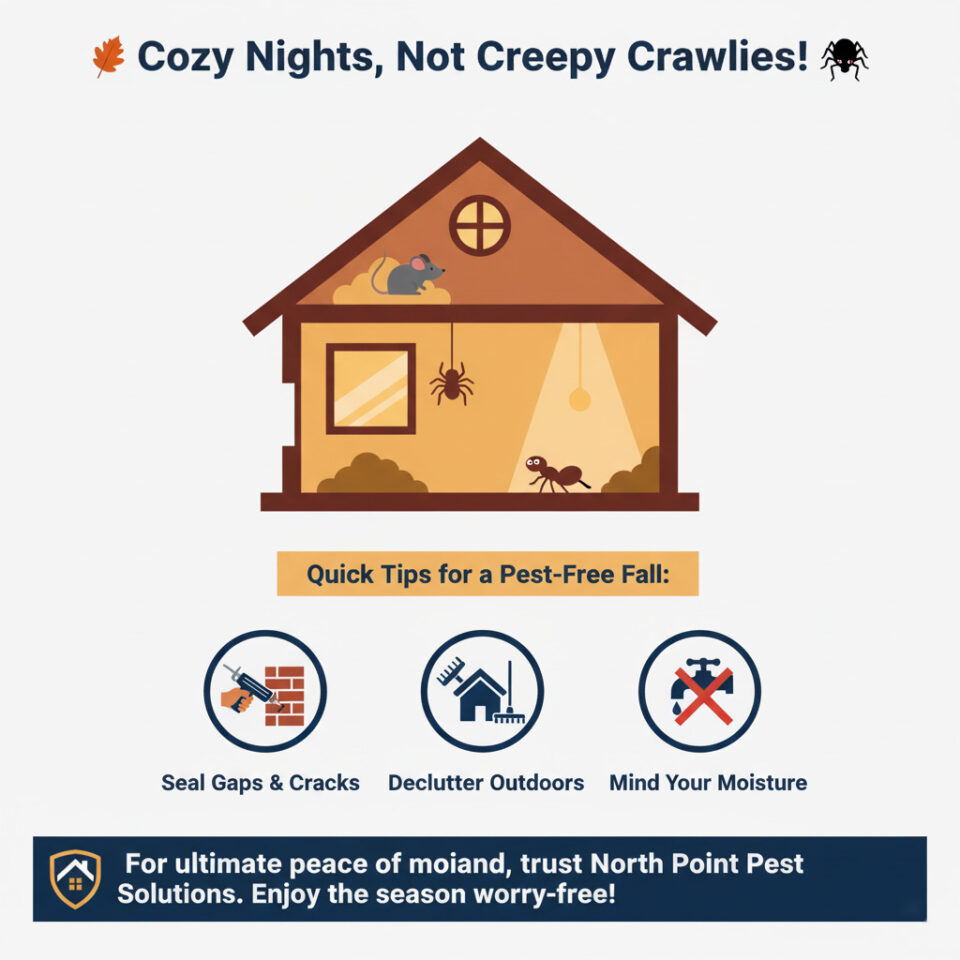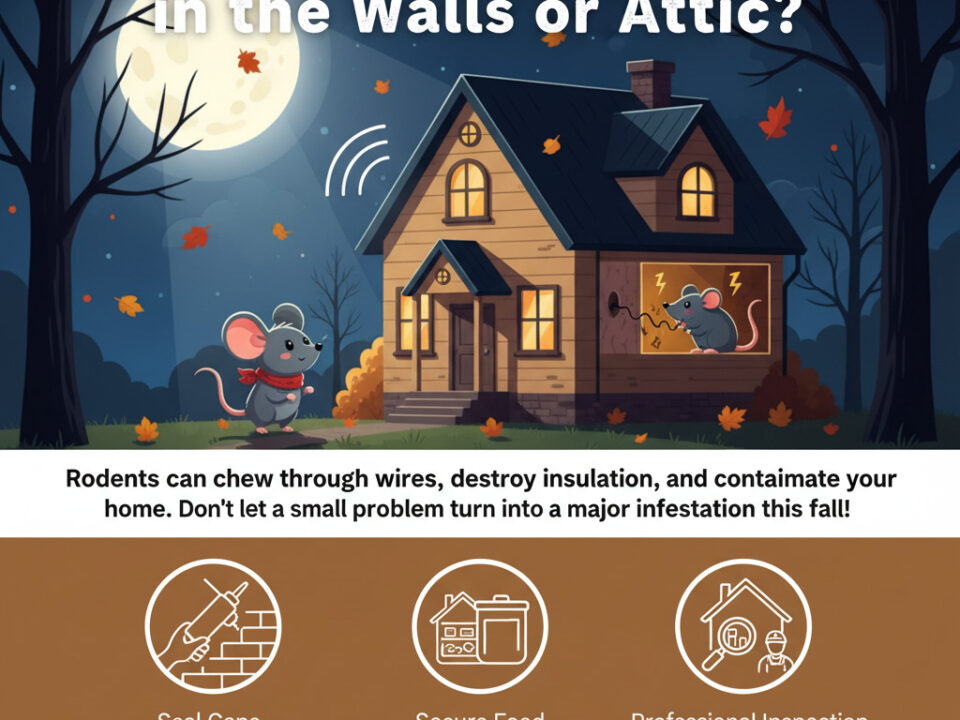As temperatures drop and winter approaches, many homeowners breathe a sigh of relief, assuming pests will disappear until spring. This belief is dangerously wrong when it comes to rodents. Mice and rats don’t hibernate. They remain active all year, and winter is actually when they become a serious problem for homeowners. Cold weather drives rodents indoors, where they find everything they need: warmth, food, shelter, and safe spaces to nest and breed. Your home becomes their ideal winter habitat. The most effective way to stop an infestation before it starts is exclusion—the practice of physically sealing entry points and removing access to your home. Unlike traps or poisons that only address rodents after they’ve moved in, exclusion prevents them from entering in the first place. It’s a proactive step that protects your home throughout the winter months.
Marin County Professional Rodent Control for Winter
Marin County’s mild coastal climate and wooded residential areas create ideal conditions for year-round rodent activity. As fall transitions to winter, mice and rats seek shelter in homes throughout the county. Understanding rodent behavior during cold months and taking preventive action now protects your property from damage and your family from health risks. Professional exclusion addresses the problem at its source.
What Happens to Rodents During Winter
Rodents stay active during winter, but they change their behavior as outdoor temperatures fall. They reduce their time outside and focus on finding indoor shelter. Mice can squeeze through openings as small as a dime. Rats can fit through gaps the size of a quarter. These tiny entry points are easy to overlook, but rodents locate them quickly.
Once inside, they seek out hidden spaces to build nests:
- Attics and crawlspaces
- Basements and wall voids
- Garages and storage areas
- Behind appliances and water heaters
They gather soft materials—insulation, fabric, paper—to build nests in these hidden areas. Late fall is when rodents begin their search for shelter, often weeks before the first snow or hard freeze. In Marin County, this migration typically begins in October as evening temperatures drop and coastal fog increases. This early migration gives them time to settle in and reproduce. A single pair of mice can produce dozens of offspring within just a few months. By midwinter, what started as one or two rodents can become a full infestation. The longer they remain undetected, the more entrenched they become.
Why DIY Prevention Usually Fails
Most homeowners who attempt DIY rodent control rely on traps or poisons. These methods only address the rodents that are already inside. They don’t prevent new ones from entering.
Common DIY failures include:
- Traps and poisons only treat symptoms. They remove visible rodents but don’t stop new ones from entering through the same gaps.
- Poisons create secondary problems. Rodents often die inside walls or other inaccessible spaces. The decomposing bodies create foul odors and attract secondary pests like flies and beetles.
- Foam and caulk don’t stop rodents. Rodents chew through both materials with ease.
- Homeowners miss entry points. Small cracks around vents, pipes, and utility lines are easy to overlook without proper training.
- Results are temporary. Once the visible rodents are gone, new ones move in through unsealed entry points.
DIY methods treat symptoms, not causes. The result is a cycle of trapping and reappearance that never truly solves the problem.
What Professional Exclusion Involves
Exclusion is a preventive method focused on sealing entry points and eliminating conditions that attract rodents. It’s fundamentally different from extermination. A professional exclusion service includes several key components:
Thorough Inspection Technicians examine the exterior and interior of your home to identify holes, gaps, cracks, and other vulnerabilities. They also look for nesting areas and environmental factors that make your property attractive to rodents.
Sealing and Repair The sealing process uses durable, rodent-proof materials:
- Copper mesh and steel wool for gaps around pipes and vents
- Heavy-grade weather stripping for doors and windows
- Metal reinforcements combined with sealants for larger openings
- Foam alone is never sufficient
Sanitation and Habitat Modification Technicians remove clutter, debris, and vegetation that provide hiding or nesting sites. They identify food sources and recommend storage changes to eliminate attractants.
Monitoring Some services include tracking stations or follow-up inspections to confirm that no new activity occurs after exclusion work is complete.
Exclusion eliminates the need for recurring extermination treatments. It reduces long-term maintenance costs and provides lasting protection against future infestations.
Why Timing Matters
Rodents begin moving indoors in late fall as outdoor food sources become scarce and temperatures drop. This migration happens before most homeowners notice any signs of activity. By the time winter fully sets in, rodents may have already established nests and started breeding inside your home. Excluding early prevents these reproduction cycles from taking hold. A pair of mice that enters your home in October can produce multiple litters by January. Each litter can include five to ten offspring, and those offspring reach breeding age within weeks. Early prevention stops this exponential growth before it begins. Homeowners who wait until midwinter to address rodent problems face much larger infestations and higher costs. Reactive treatments require more extensive trapping, cleanup, and repair work. Acting in late fall or early winter protects your home before the problem escalates and saves money in the process.
The Hidden Costs of Waiting
Rodents cause serious damage to homes and create health hazards that grow worse over time. Understanding these risks makes the value of prevention clear.
Property Damage
- Chewed electrical wires create fire hazards
- Shredded insulation reduces energy efficiency and increases heating costs
- Gnawed drywall, wood, and plastic pipes require expensive repairs
- Most damage is not covered by homeowners insurance
Health Risks
- Droppings, urine, and saliva contaminate surfaces and food
- Spread diseases including hantavirus and salmonella
- Allergens from fur and dander aggravate asthma and respiratory conditions
- Children and elderly family members face the greatest health risks
Population Growth A single breeding pair can escalate into dozens of rodents within weeks. As the population grows, so does the contamination. The longer an infestation persists, the more extensive the cleanup becomes. Professional remediation may require removing and replacing insulation, sanitizing entire rooms, and sealing off sections of the home. These costs far exceed the price of preventive exclusion. Waiting creates problems that compound over time.
Why Professional Exclusion Works
Professional exclusion succeeds where DIY methods fail because it addresses root causes. Several factors make professional service more effective:
Advanced Detection Tools
- Thermal imaging cameras identify hidden gaps
- Borescopes inspect inside walls and tight spaces
- Moisture meters locate vulnerable areas
Superior Materials
- Industrial-grade steel wool resists rodent teeth
- Copper mesh withstands weather exposure
- Reinforced sealants don’t degrade after one season
Expert Training Exclusion technicians understand how different homes develop vulnerabilities. Homes in Marin County often have unique construction features—older foundations, wooden siding, and hillside locations—that create specific entry points. Regional climate and local rodent species also affect exclusion strategies.
Long-Term Protection Professional exclusion eliminates the need for poison, reduces the frequency of follow-up treatments, and maintains your home’s comfort and cleanliness throughout winter. When necessary, professionals use eco-friendly and pet-safe materials that don’t compromise effectiveness. The investment protects both health and property.
Winter Preparation Checklist
Take these steps to prepare your home before winter:
☐ Seal visible cracks and gaps around doors, windows, and utility openings
☐ Store all food and pet food in airtight containers made of metal or thick plastic
☐ Keep basements, garages, and storage areas clean and free of clutter
☐ Trim vegetation, shrubs, and tree branches away from the home’s exterior
☐ Store firewood at least several feet away from exterior walls
☐ Schedule a professional inspection before consistent freezing weather arrives
These actions reduce your home’s attractiveness to rodents and help technicians identify problems early.
Protect Your Home This Winter
Rodents remain active through the coldest months of the year. They don’t disappear—they move closer to people. Winter exclusion prevents infestations before they start, protecting your family from health risks and your home from costly damage. Acting early saves time, stress, and money. A professional exclusion service ensures your home stays rodent-free all winter. The process is straightforward, effective, and provides peace of mind when temperatures drop and rodents start searching for shelter. North Point Pest Services Inc. serves Marin County homeowners with expert rodent control & exclusion services. Schedule your rodent exclusion service before the season sets in to protect your home and family.






